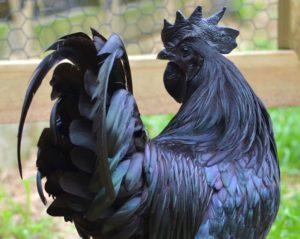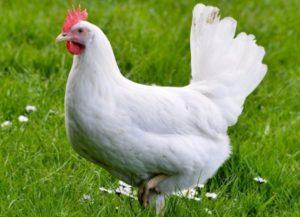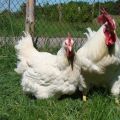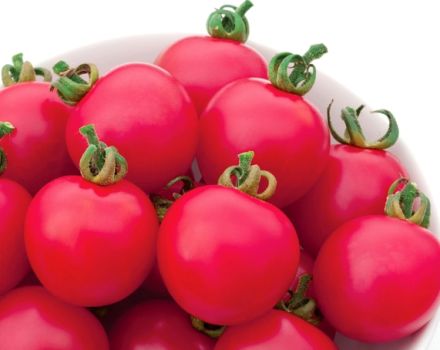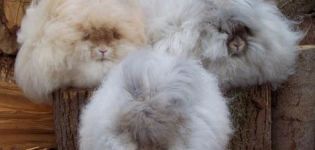Description of the Barnevelder chicken breed and how to care for birds
Recently, farmers are increasingly paying attention to universal chicken meat and egg direction. These include the Barnevelder chickens, which are still quite rare in Russia. They are undemanding to the conditions of keeping and feed, are highly productive, have a decorative appearance, therefore they quickly gain popularity among private poultry breeders.
Origin story
The breed was bred in Holland, in the city of Barneveld. In 1893, breeders decided to get chickens that would carry chocolate-colored eggs.
To create a new breed, indigenous Dutch, Indian fighting chickens, representatives of the Brama, Langshan, Rhode Island and Cochinhin breeds were used. From the latter, the Barnevelders inherited the unusual color of the eggshell.
In 1910 a standard was developed, and in 1923 the breed was officially recognized.
Description and characteristics of the breed
Barnevelders are large birds, the mass of roosters is 3-3.5 kg, chickens are slightly smaller. They are strong, neat and compactly built, with a medium-sized head, medium-length feathers and wings adjacent to the body.
Standard and differences in different countries
The Barnevelder hull depth to length ratio is 2: 3. The back line is raised upward. The chest and shoulders of chickens are wide and round. The thighs are powerful. Legs are yellow, females may have a smoky hue.
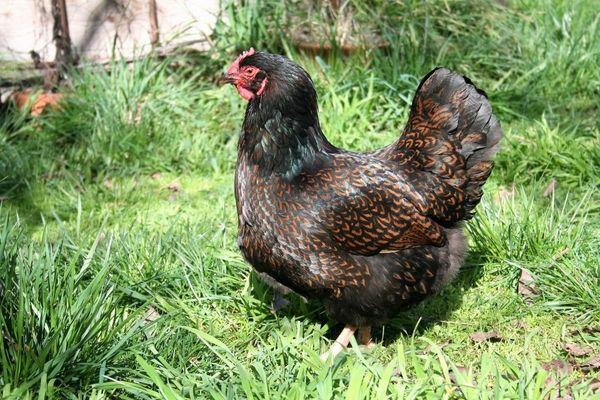
The neck is of medium length, with dense plumage. The facial part of the head is non-feathered. The beard is short and round. The crest is medium-sized, leaf-shaped, has 4-6 teeth, scarlet. The beak is short, yellow. The eyes are reddish orange.
The tail of the cock is richly feathered, of medium, medium-high or high length. The tail of the chicken is wide.
Barnevelder dwarf chickens were bred. Roosters weigh 1-1.2 kg, chickens 0.8-0.9 kg. Otherwise, there is no difference from the standard size Barnevelders.
Colors
The feathers of Barnevelder chickens have a characteristic double edging: one stripe borders the edge of the feather, and the other runs parallel to the first in the form of a ring.
Usually chicken feathers are colored reddish-brown and have a black outline. In the light, they shimmer blue-green. The tails of the roosters are black, the tails of the hens are lace-colored.
The shade of the plumage of chickens can be from coffee-chocolate to deep red with a golden sheen. There are light-colored Barnevelders - from pure white to creamy and silver with dark edging, as well as completely black individuals with light blotches.
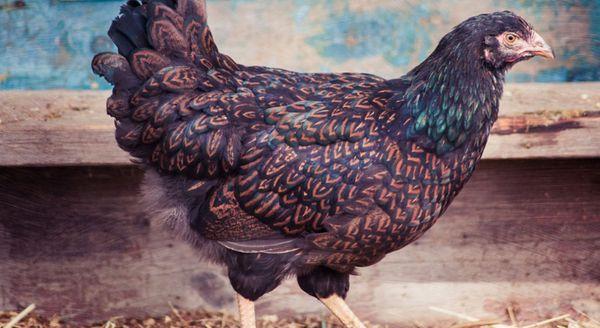
In Great Britain, red and white chickens were bred; this color is unrecognized in the Netherlands. There are birds with lavender-edged feathers due to a lack of melanin. There is an autosexual color in the breed that is not recognized by most countries.
Barnevelder chickens are black, brown or reddish in color with golden patches on the body and yellow breast.
Unacceptable vices
Chickens are not allowed to breed if they have the following defects:
- narrowed chest;
- thin skeleton;
- weak physique;
- shortened or narrowed back;
- underestimated or overestimated body position;
- poorly feathered tail;
- unacceptable color;
- feathered legs;
- a whitish coating on the earlobes.
Productivity of chickens
Puberty in pullets occurs at 6-7 months, and physiological maturity at 12 months. Muscle gain is fast, Barnevelder chickens reach maximum weight by one year.
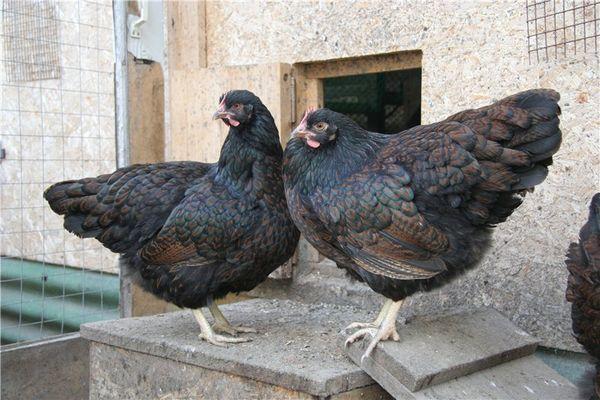
Up to 200 eggs can be obtained from one layer per year, which the hen lays continuously, including in winter. The mass of 1 egg is 60-80 g, the color of the shell is from terracotta to dark brown.
Barnevelder dwarf chickens lay eggs weighing 35 g. A hen can produce 110-130 eggs per year.
Maternal instinct
Maternal instinct is well expressed in 90% of hens. Chickens incubate eggs during the entire incubation period and take care of the chicks.
Barnevelder chickens character
Barnevelders have a calm, docile nature. They live peacefully in the same chicken coop with other birds, are friendly to humans. Roosters of this breed rarely fight, preferring to resolve conflicts with the power of their voice. Barnevelders do not like being alone and usually keep in packs.

Advantages and disadvantages
The advantages of the breed include:
- versatility;
- decorative appearance;
- calm, peaceful character;
- good maternal instinct of hens;
- high egg and meat productivity;
- undemanding to living conditions, feeding.
Disadvantages of chickens of this breed:
- frost intolerance;
- the need for large areas for physical activity;
- the ability to take off to great heights.

Features of the content
Chickens of the Barnevelder breed quickly adapt to a new place, easily adapt to new conditions of detention and unusual feed.
Chicken coop
A spacious dry room is used as a chicken coop. The ceiling height needs to be small - up to 2 m.
It is important to provide good ventilation without drafts. Air humidity - within 60-70%.
To protect against cold northerly winds, the chicken coop is located on the south side relative to other buildings. The building is placed on a hill so that water does not accumulate in it during rains, melting snow.
Barnevelders cannot be kept in cages. Chickens must have enough space for physical activity. 1 m2 3-5 heads are placed on the floor area.
The floor is made of clay, this material warms up better. A deep bed of straw, sawdust or peat is placed on it, to which slaked lime or wood ash is added. It will protect chickens from the cold in winter. In this case, it is not required to heat a room built of wood. Litter consumption rate - 15 kg per head per year.
Brick chicken coops and cinder block rooms must be insulated and heated in the cold season. The air temperature should be kept at 18-25 ° C.
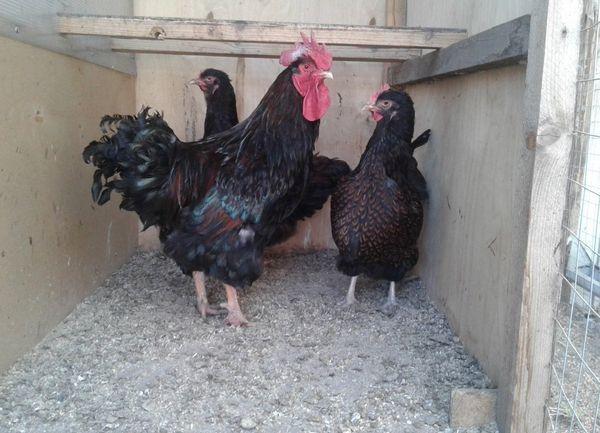
Chickens love light, so the windows in the hen house are placed on the south side. For best egg production, the daylight hours for layers should be 17 hours.
A manhole with a vestibule and doors will be equipped in the wall of the hen house. It is placed at a height of 20 cm from the floor.
Perches with a diameter of 5 cm in steps of 30-35 cm are placed at a height of 1 m from the floor. Place the nests in a dark place and put sawdust, straw and fluff in them.
A 50x50 cm box is placed inside the chicken coop, filled with wood flour or a mixture of sand and ash. Dry baths help chickens get rid of ectoparasites and keep their plumage in order.
Place for walking
For Barnevelders, it is necessary to equip a walking area 3-4 times larger than the area of the chicken coop.
Representatives of the breed are able to take off 1.5-2 m upwards, therefore, the walking area should be fenced off with a fence or mesh more than 2 m high. To protect from the sun, a canopy is equipped.
Barnevelders tolerate the cold quite well, so in winter, if the temperature exceeds 0 ° C, they can be released for a walk.
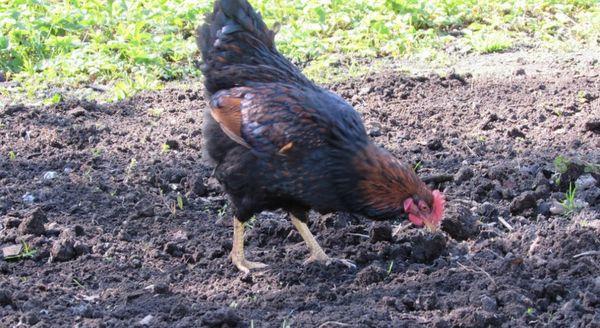
Drinking bowls and feeders
Drinkers and feeders are placed inside the chicken coop. They should have a closed top so that chickens do not climb inside and scatter the contents. Separately equip a chalk feeder and a gravel container.
Molting
Moulting in chickens takes place once a year in the fall and lasts 2-2.5 months. During this period, egg-laying ceases.
What to feed?
Barnevelders are not picky and eat any food. They can be fed ready-made feed or compose a diet on their own from natural products.
The diet should contain:
- Cereals. Various easily digestible cereals should make up at least 60% of the diet. The Barnevelders are especially fond of corn.
- Legumes. A source of vegetable protein.
- Greenery. In winter, it is necessary to feed the chickens with dried plants and herbal flour pellets.
- Raw or boiled vegetables.
- Cottage cheese, reverse, chopped boiled egg, meat and bone meal.
- Yeast. The additive is prepared at the rate of 30 g of fresh yeast per 3 liters of water. The mixture is left in a warm place for 8 hours for fermentation, after which it is fed to chickens in an amount of 15 g per day.
- Sprouted cereals.
- Mineral dressing. The body of layers often lacks calcium, chalk, shell rock, crushed eggshells or bone meal should be given along with the feed.
- Gravel. It is necessary for the normal course of digestion.
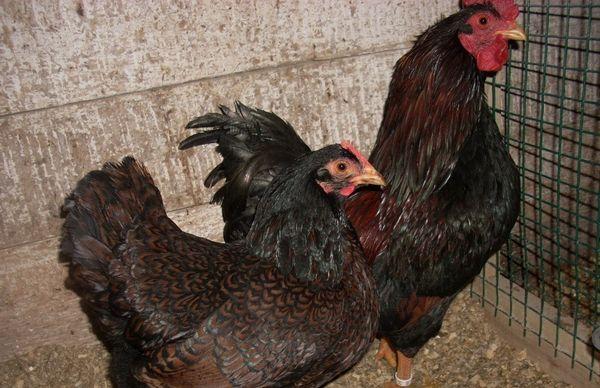
Barnevelder chickens require 75-150 g of feed per head per day. Birds are fed at the same time - in the morning from 8.00 to 9.00 and in the evening from 16.00 to 17.00.
Breeding specifics
Breeding Barnevelders is not particularly difficult. The eggs are characterized by a high fertility rate (up to 95%), and the hatchability and survival rate of chickens of this breed reaches 94-95%.
Hatching eggs
Thanks to a well-developed maternal instinct, chickens incubate eggs on their own during the entire incubation period. However, during incubation, the chicken stops laying. If the farmer is faced with the task of getting the maximum number of eggs from the hen, the clutch must be moved to the incubator. Incubation of eggs lasts 3 weeks.
Chick care
After hatching and drying, the chicks are transferred from the incubator to the brooder. Until 1.5 weeks of age, they are fed every 2 hours, and then gradually reduce the frequency of feeding to 5 times a day. The bedding is changed daily.
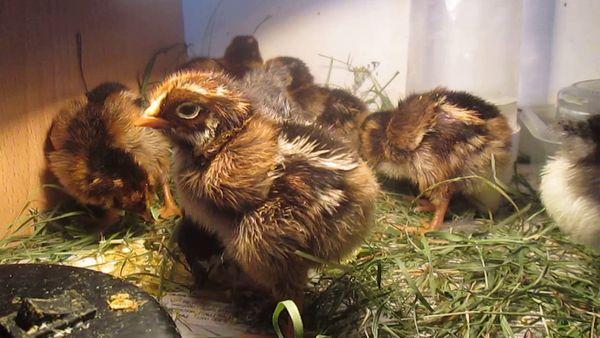
In the first 2 days, the lighting is not turned off at night. The temperature indicator in the brooder must be at least 35 ° C. After the chickens reach the age of one week, they begin to gradually lower it by 1-2 ° C per day, bringing it to standard parameters.
Diet of chickens
On day 1 after hatching, the feed for Barnevelder chickens consists of chopped boiled eggs. Sprinkle the pieces with semolina to prevent them from sticking to the down and paws. From 2 days of age, chickens are fed steamed corn grits, chopped clover, quinoa and nettle, vegetables and cottage cheese with added vitamins. On the 4th day of life, gravel and mineral dressings are offered.
Whole grains and other "adult" feeds are introduced into the diet only after the chickens reach one month of age. At the same time, the birds are transferred to three meals a day.
Planned herd replacement
After 3-4 years, the intensity of laying hens begins to decrease, so by this time it is necessary to prepare replacement chicks. If chickens are kept for meat, they are slaughtered no later than 2 years of age. With age, the taste of meat deteriorates.

Diseases of the breed
To protect against infectious diseases, chickens must be vaccinated in a timely manner. This is especially important for young animals obtained from other farms.
In order to prevent cannibalism and hypovitaminosis, it is necessary to correctly formulate a diet taking into account all the nutritional needs of birds.
Parasitic infestations will help prevent the timely administration of antiparasitic drugs to chickens.
The Barnevelders often have joint disease and muscle atrophy resulting from a sedentary lifestyle. To prevent these diseases, it is necessary to avoid crowded and cage content, as well as organize a walking area.
